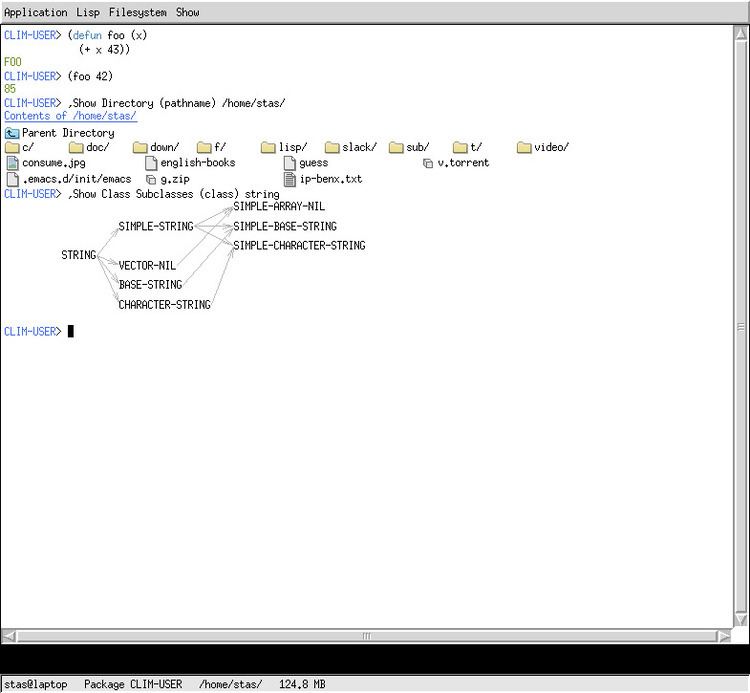 | ||
The Common Lisp Interface Manager (CLIM) is a Common Lisp-based programming interface for creating user interfaces — i.e., GUIs. It is a completely object-oriented User Interface Management System, using the Common Lisp Object System and is based on the idea of stream input and output. There are also facilities for output device independence. It is descended from the GUI system Dynamic Windows of Symbolics's Lisp machines Main development was between 1988 and 1993. CLIM 2.0 was released in 1993.
CLIM has been designed to be portable across different Common Lisp implementations and different window systems. It uses a reflective architecture for its window system interface. CLIM supports, like Dynamic Windows, so-called Presentations.
CLIM is available for Allegro CL, LispWorks, Macintosh Common Lisp, and Symbolics Genera
A free implementation of CLIM is called McCLIM. McCLIM has several extensions to CLIM and has been used for several applications like Climacs, an Emacs-like editor. McCLIM also provides a mouse-sensitive Lisp Listener, a REPL for Common Lisp.
